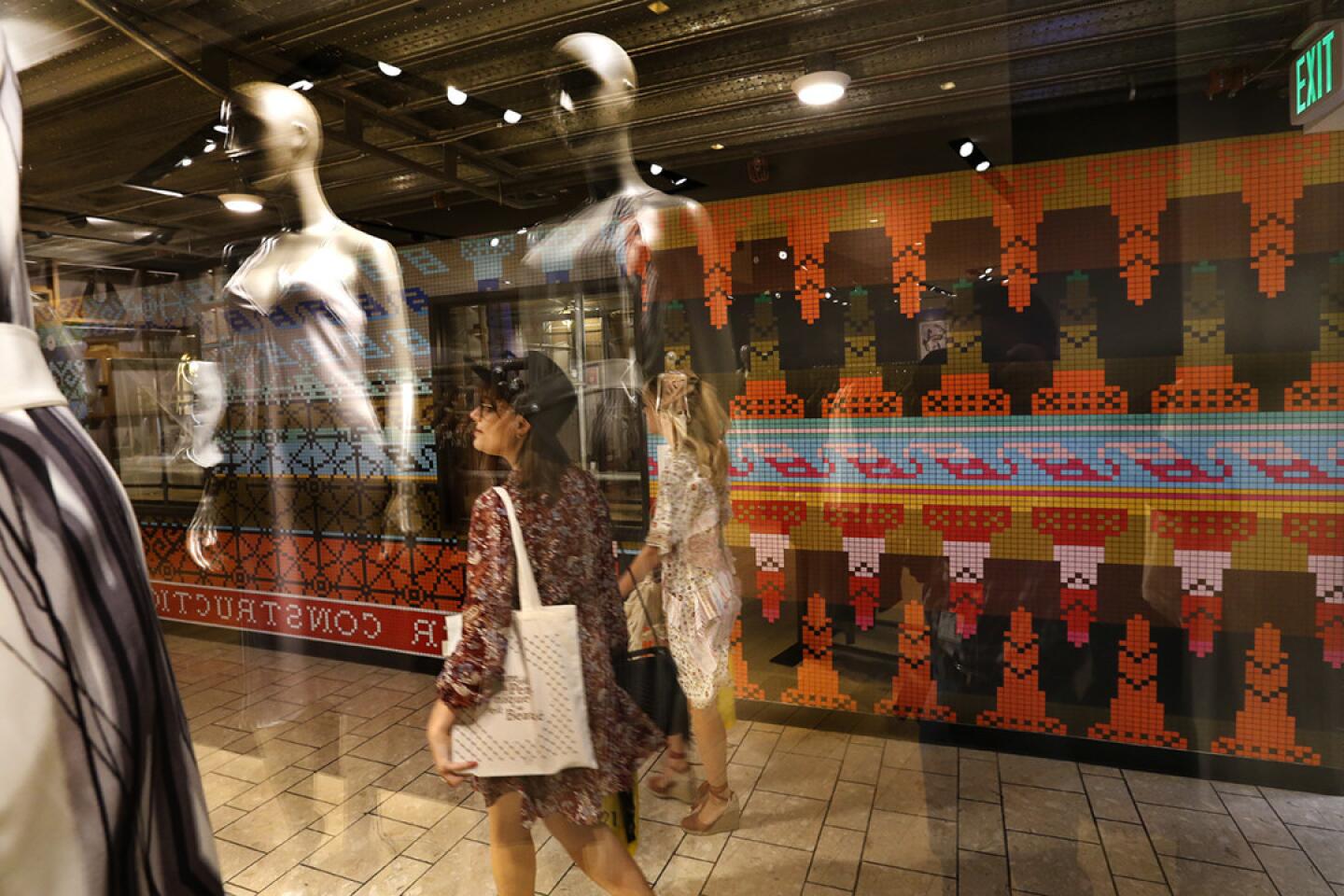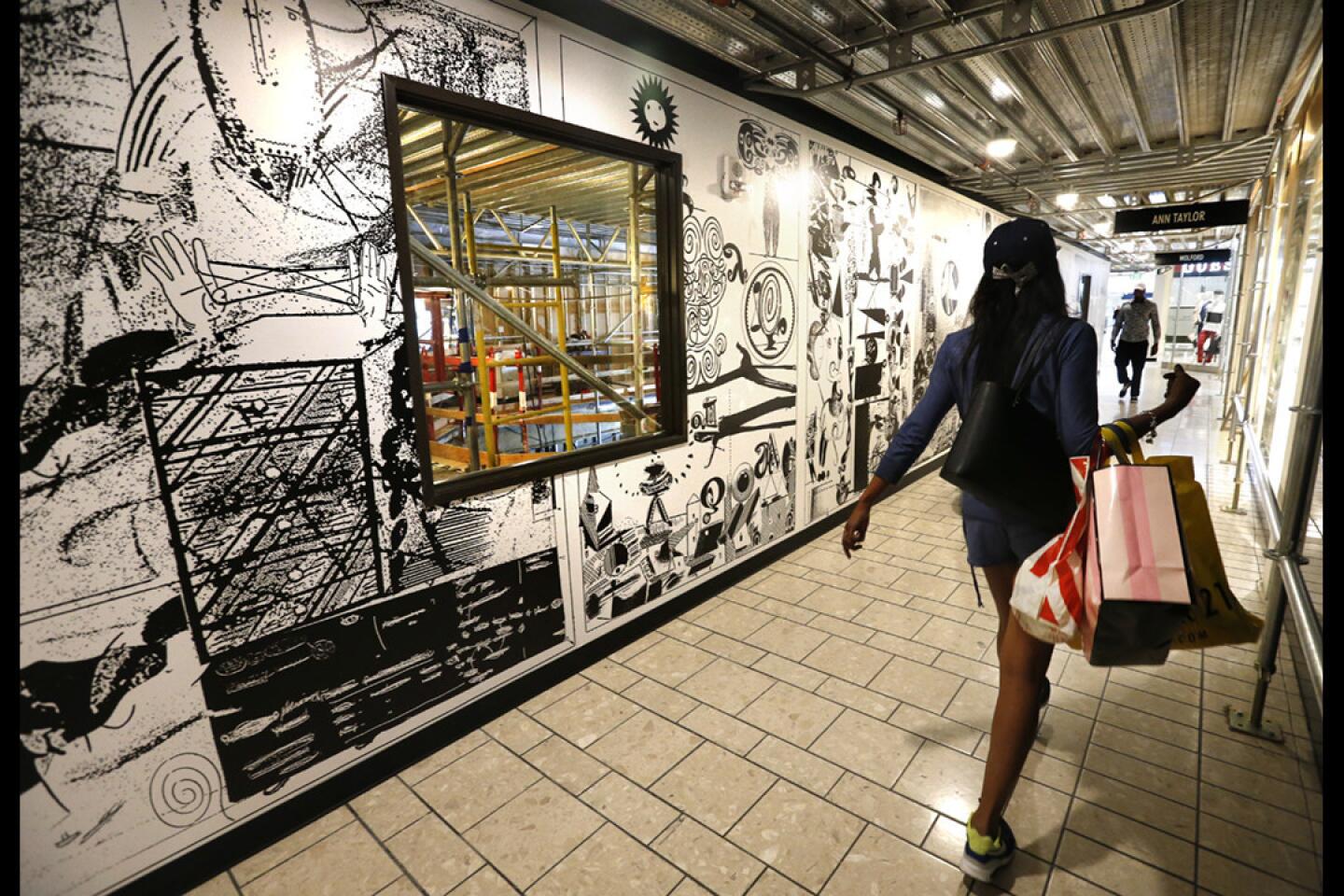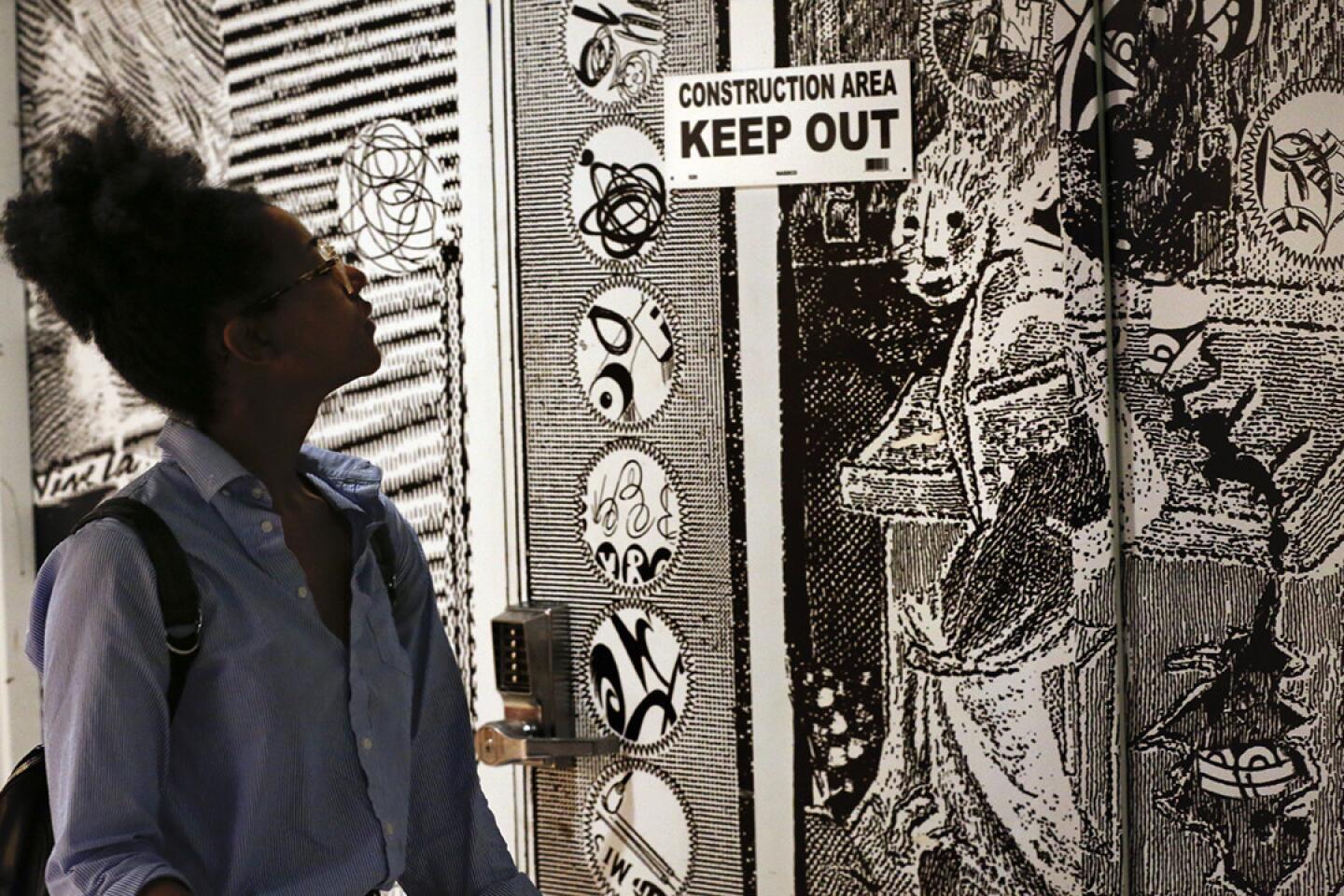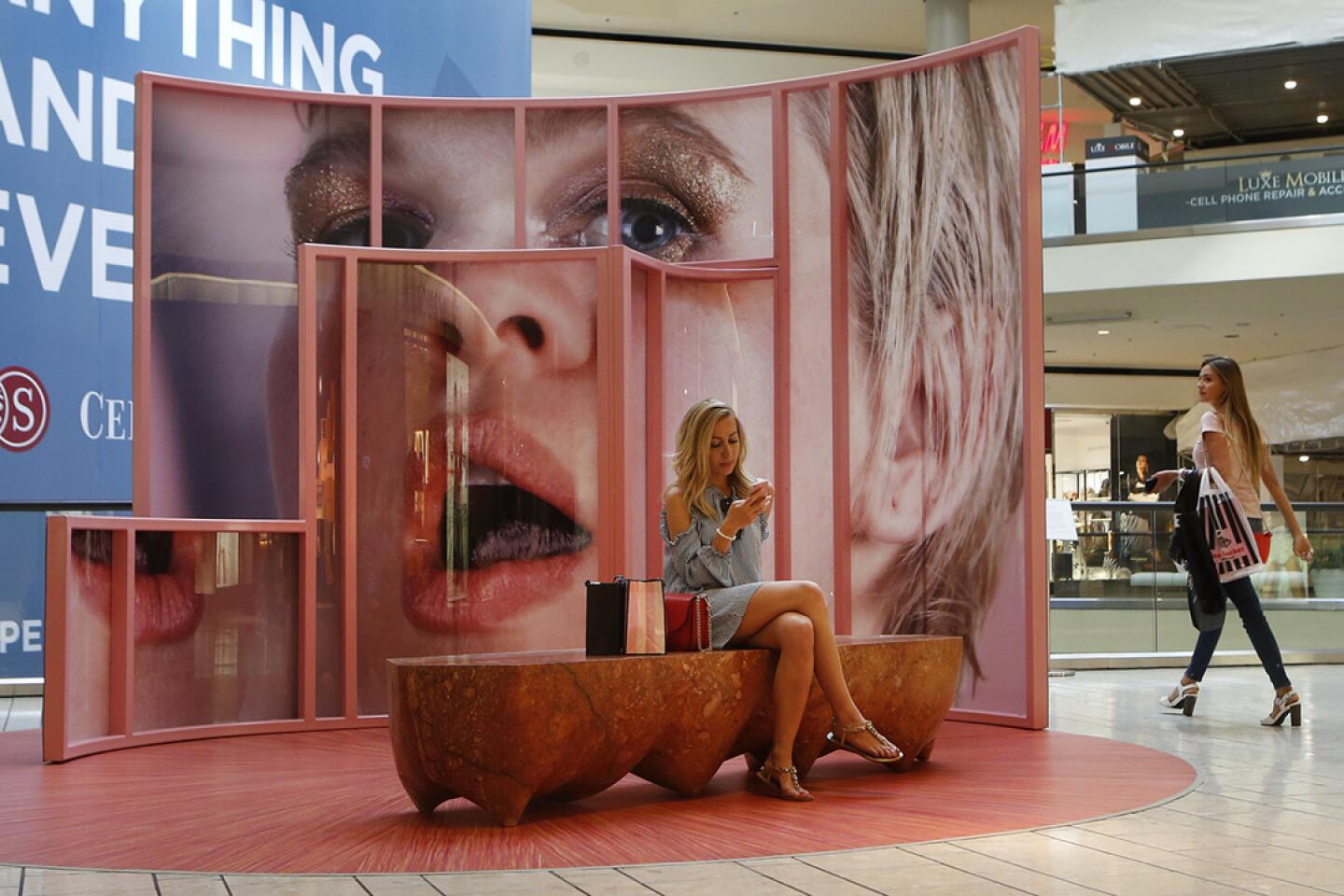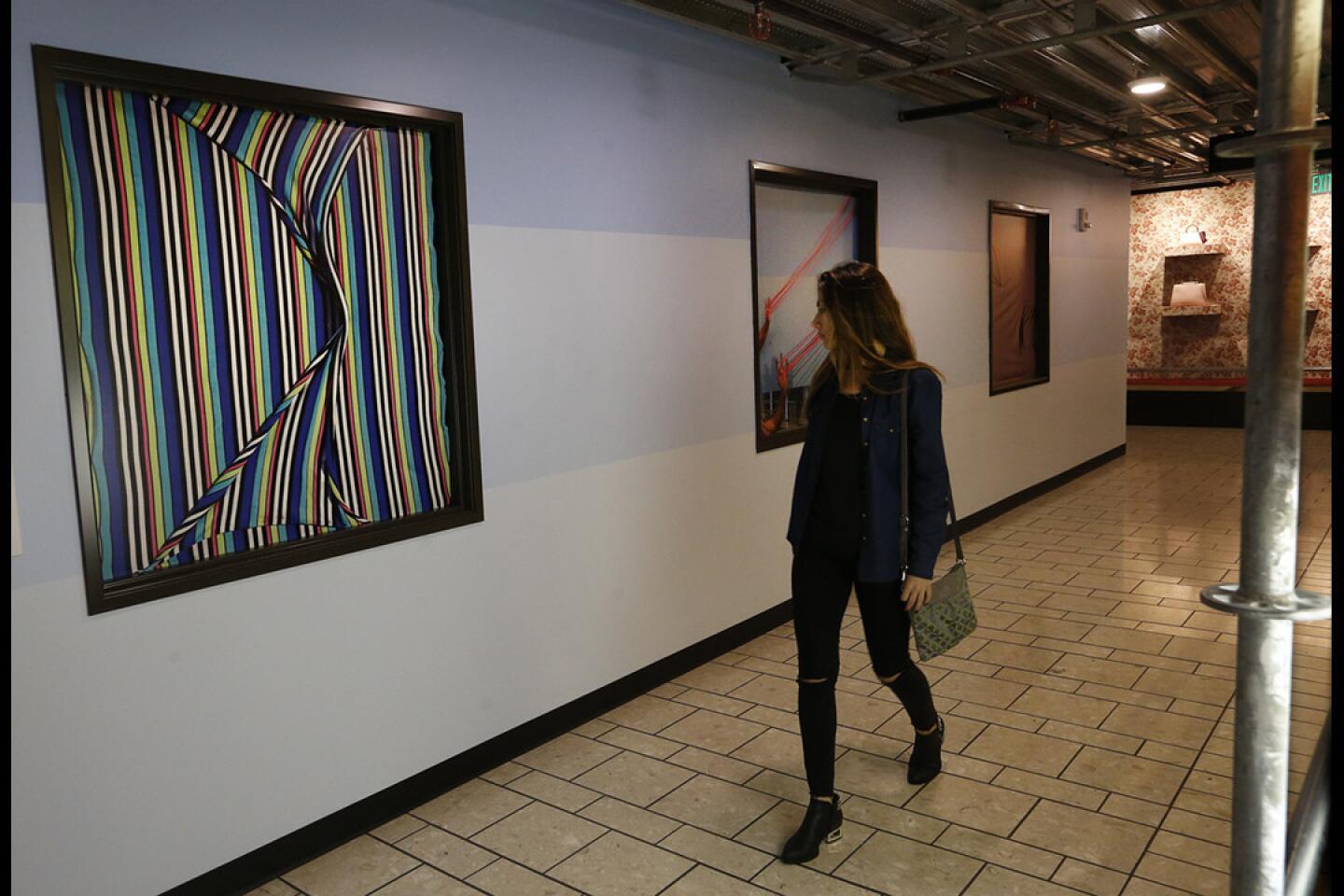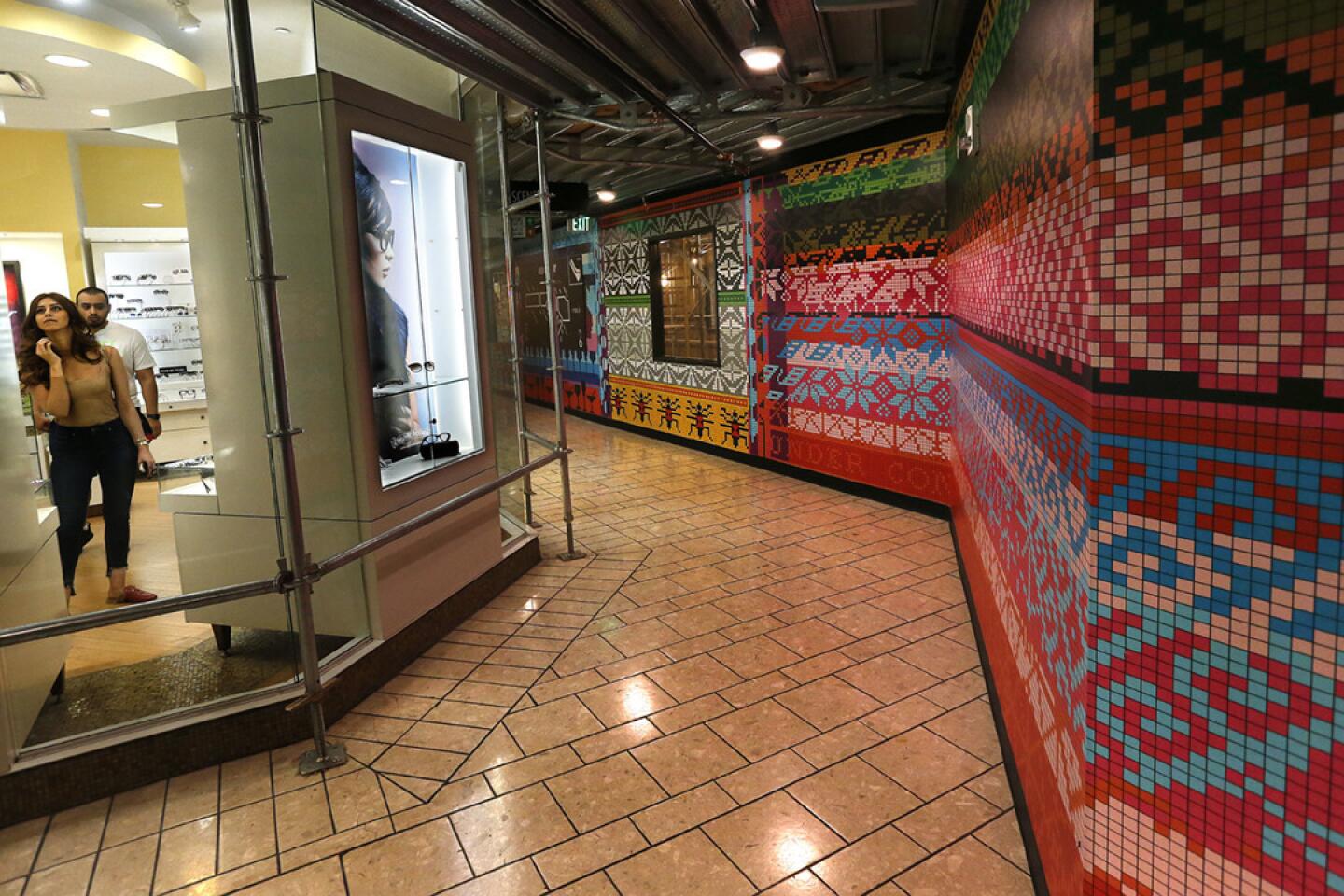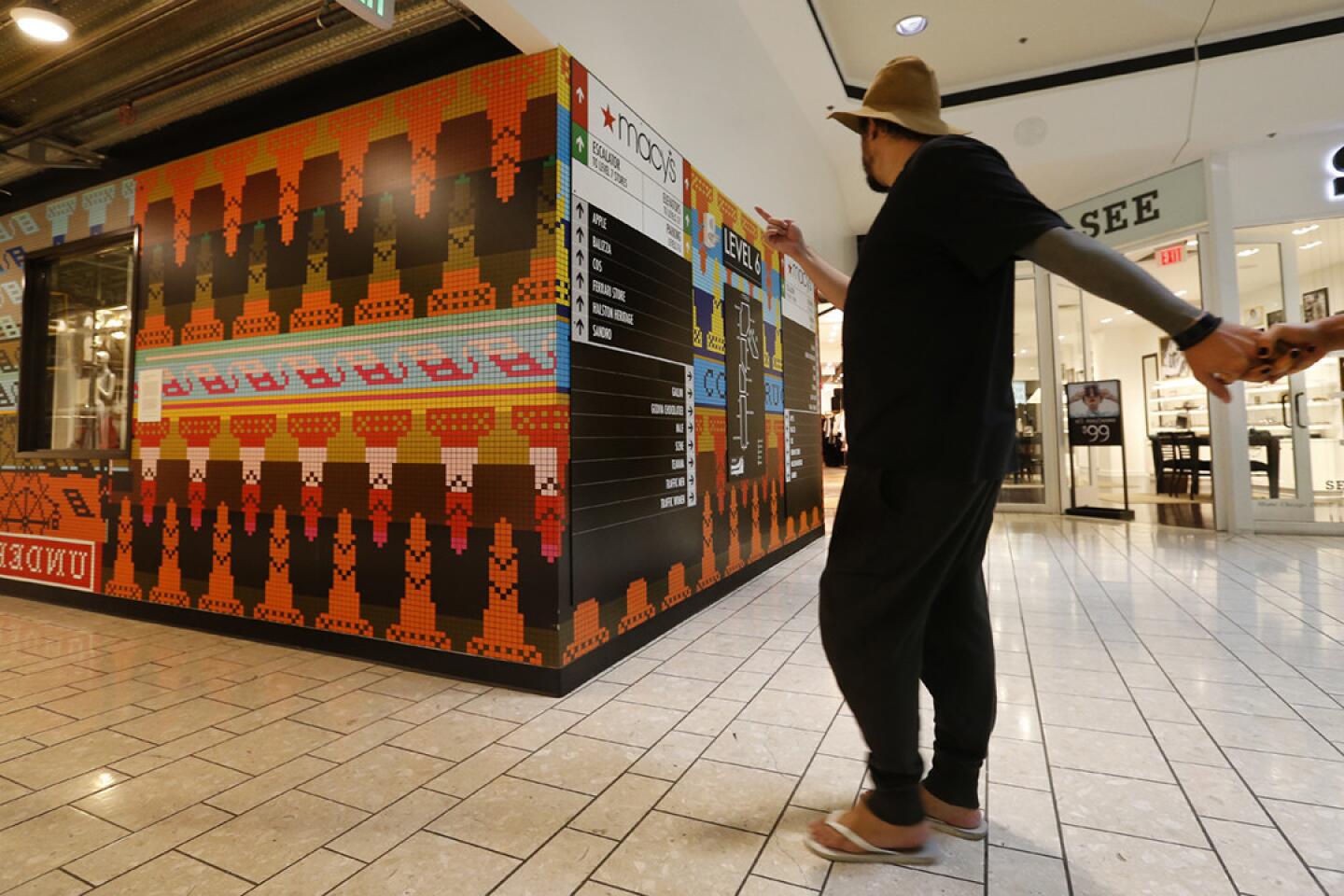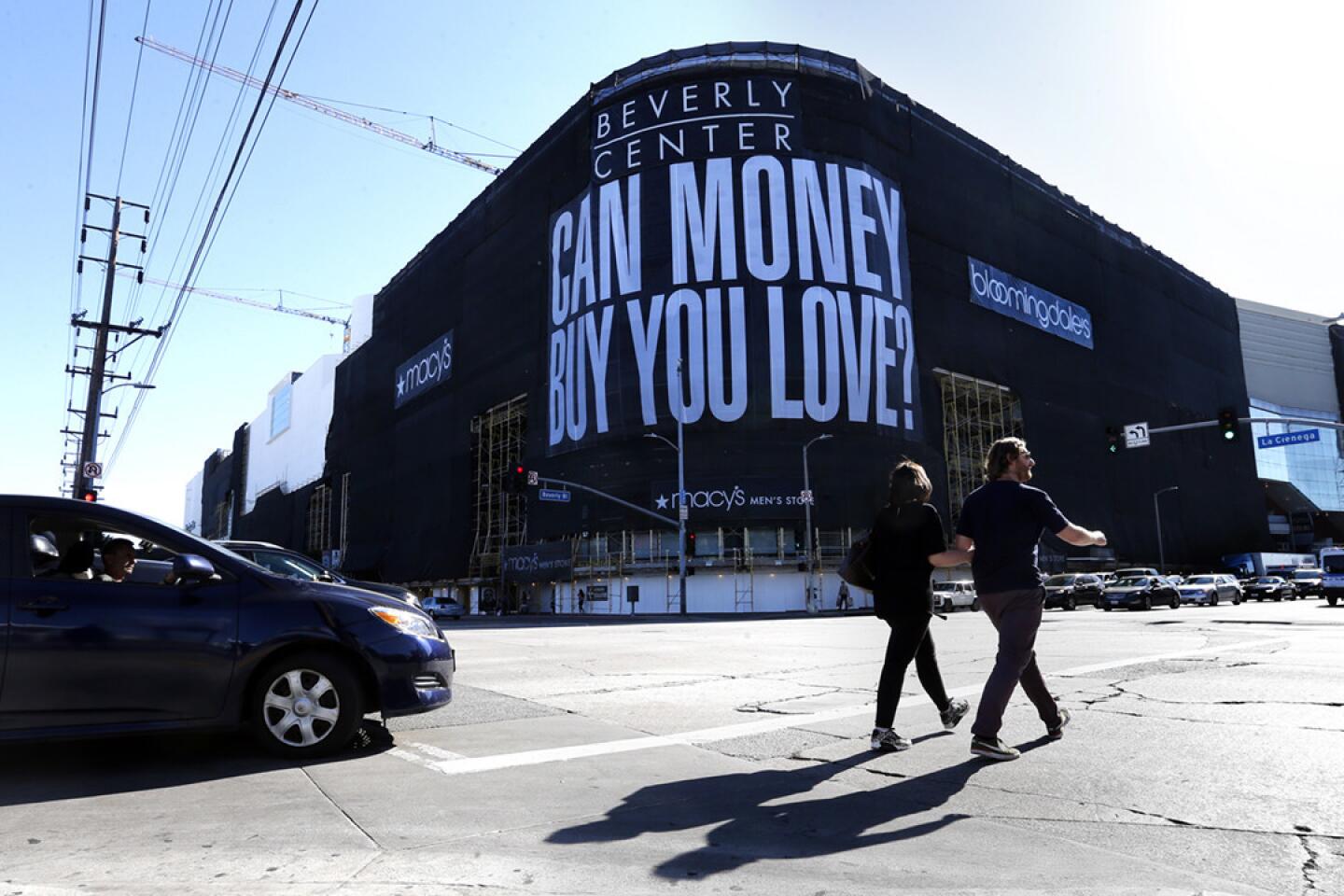Beverly Center as art gallery? How some big-name artists are behind those construction barricades
You may have seen it on your way to the Apple store. You likely rushed by.
Stitched into the Macy’s wing of the Beverly Center — now an eyesore of construction scaffolding and detour signage due to a massive renovation — is recently installed art by Lisa Anne Auerbach to temper the clutter. The temporary, site-specific work, “Strik Strikke, 2017,” is a mural more than 1,000 feet long depicting intricate knitting patterns rendered in candy-colored hues and a pixelated effect.
The work is both a distraction from the construction and a meta commentary on it. The mural is embedded with playful wordplay and symbols addressing the surrounding landscape (think orange construction cones, security cameras and ripe fruit opposite the Apple store). It also has nods to a broader political landscape (think human silhouettes carrying protest signs and a pink 1960s feminist symbol, the Venus sign with a raised fist inside).
Auerbach’s work is part of a Beverly Center art project that’s morphing along with the building’s $500-million renovation. As the mall makes way for a new food hall, parking lot and updated facade, art in the form of construction barricades and scaffolding scrims brightens the space and injects passing shoppers with a bit of culture. Independent curator Jenelle Porter organized the project in association with the Hammer Museum and brought in Barbara Kruger, Catherine Opie, Sharon Lockhart and other big name artists who Porter felt would be provocative.
“Lisa’s work is fun, but it’s also political,” Porter says. “I wanted to invite artists who could push a little bit. Especially after the election. Public art asks questions and invites us to ask questions. That’s the point.”
As the Internet becomes the shopping destination of choice, some old-school malls across the U.S. are trying to reinvent themselves. This could simply mean fancier dining or aesthetic touch-ups, or it could mean offering a new experience featuring IRL (in real life) services and entertainment: live music, a spa, amusement park-like rides, a farmers market. Or, in the case of the Beverly Center, turning retail walkways into a pop-up art gallery.
The first four artworks at the Beverly Center — by Opie, Lockhart, Geoff McFetridge and Dave Muller — went up shortly after the construction groundbreaking last summer. Others, by Julian Hoeber and Karen Kimmel, went up in the fall. Now that the construction has progressed and new barricades have been erected, most have come down and new works — mostly temporary vinyl murals — have been installed in their place.
On Thursday, the Beverly Center will announce the artists behind the second wave of works: Auerbach, Kruger, Ed Fella and Anthony Lepore.
“It’s a big platform, metaphorically and literally,” Porter says. “We wanted to offer them a really large canvas — time, a lot of space and money. And see what they’d do. I think this town is hungry for art, especially contemporary art.”
William Taubman, chief operating officer of Beverly Center owner Taubman Centers and an art collector himself, says his intention is to “capture the creative spirit of L.A.” for thousands of passersby to see daily.
“In many ways, L.A. is to the art world what New York was in the 1960s,” Taubman says. “L.A. is a dynamic environment which is attracting artists from everywhere.” Because of that, he added, “including art within our renovation was a given.”
Taubman reached out to Hammer Museum Director Ann Philbin, and she connected him with Porter, an L.A. native who spent about four years working at the Institute of Contemporary Art in Boston before returning to L.A. in 2015.
During a recent tour of the Beverly Center artworks, Porter said that when she conceived of the project, the idea was to involve established artists as well as those who were under-recognized. But even she was at first unsure of the venue. Would people want to see art in a mall? Would they even notice it? Might it cheapen the art to be showcased in such a commercial setting?
Porter called serious artist friends to take a temperature check.
“I called Cathy [Opie] and said: ‘Would you respect me in the morning if I did a project like this?’ And she said: ‘Yes!’ And then: ‘Would you invite me?’ Everyone was so positive.”
Opie, whose series of beach photographs, “Hands on Boards,” lined the Beverly Center pedestrian walkway at street level, says she jumped at the opportunity.
“I really believe that the art world is larger than just being based in museums and galleries; I think art should activate every place,” she says. “Why do we only have to look at advertisements in a mall? Let’s expand our minds and our expectations of what these spaces can offer to us.”
Among the latest works are large photographs by Lepore in 4-foot-square windows that would otherwise peer into a construction zone. The artist’s studio is located in his father’s Lincoln Heights bikini factory, and he brought bits and pieces of that world into the Beverly Center. Abstract images depict the folds and sheen of uncut fabric, other pictures show spools of thread and boxes of buttons; other photographs are more realistic, even offering sociological commentary. An image of factory employees’ time cards provides a window, literally and figuratively, into the shrinking textile business.
Ed Fella, the 79-year-old type designer whose exhibit “Free Work in Due Time” is on view at the Los Angeles County Museum of Art, has an installation spanning three floors. The artist made small cut-and-paste collages of his black-and-white hand-drawn lettering, doodles and drawings over the years — material from fliers and vernacular signage that was then scanned and enlarged. The new murals function as something of a survey of his art over the decades.
Kruger, whose work blends art provocation and advertising aesthetics, has a 60-foot-tall dark scrim printed with the question “Can Money Buy You Love?” covering the exterior scaffolding on the nose of the building, at the intersection of Beverly and La Cienega boulevards.
Back inside, as customers stream past the Ferrari and Halston Heritage stores, Auerbach’s piece might just seem like bright and playful wallpaper in the background to passersby.
A toddler runs her fingers over the mural’s Chiclet-like vinyl squares, cooing “aw wowwww.” An older gentleman in a felt fedora grinds his chewing gum into the mural’s base with his toe as he rushes past. A young couple on a mission to find new shoes for the Coachella Valley Music and Arts Festival pause to take in the artwork.
“I like it. It’s so fun,” says Alessandra Grijalva, 27, a graphic designer visiting from Mexico. “It puts you in a better mood and doesn’t make the whole construction thing so bad.”
Follow me on Twitter: @debvankin
ALSO
Jonathan Barlow Lee knows all the Mark Taper Forum’s secrets — and he’s telling
Pull off the wig and falsies, and ‘Georgia McBride’ hits its groove
The duel is on: ‘Spamilton,’ the hit ‘Hamilton’ parody, to launch in Culver City
Clearing up confusion over ‘Hamilton’ tickets for L.A.: What you need to know
More to Read
The biggest entertainment stories
Get our big stories about Hollywood, film, television, music, arts, culture and more right in your inbox as soon as they publish.
You may occasionally receive promotional content from the Los Angeles Times.
